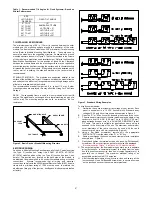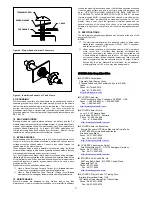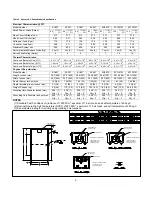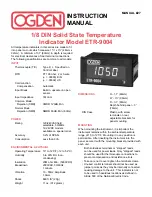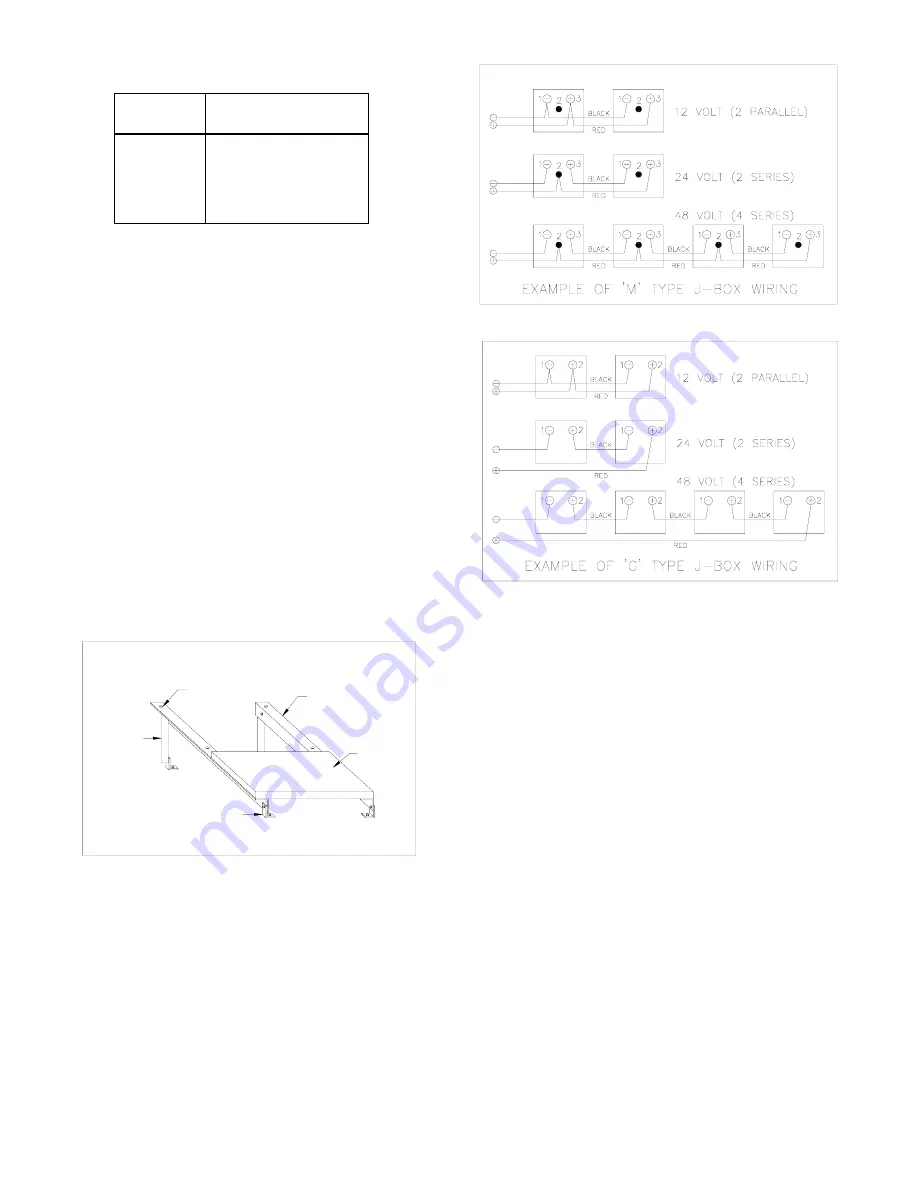
2
Table 1. Recommended Tilt Angles for Fixed Systems—Based on
Winter Performance
7. INSTALLING KC MODULES
The minimum spacing of 0.6 in. (15 mm) is required between the solar
module and the mounting surface around the perimeter of the solar
module. The frame of each module has 0.28”
φ
diameter (7 mm) mounting
holes (Refer to Module Mounting Specifications). These are used to
secure the modules to the supporting structure. An example of a ground
mounted structure is shown in Figure 2. The four holes close to the corners
of the module are most often used for attachment. Refer to the Mounting
Specification Specifications for the position of these holes. Clearance
between the module frame and the mounting surface may be required to
prevent the junction box from touching the surface, and to circulate cooling
air around the back of the module.
If the modules are to be installed on the
roof or wall of a building, the standoff method or the rack method is
recommended.
STAND-OFF METHOD: The modules are supported parallel to the
surface of the building wall or roof. Clearance between the module frames
and surface of the wall or roof is required to prevent wiring damage and to
allow air to circulate behind the module.
The recommended stand-off height is 4.5 in. (about 115 mm) If other
mounting means are employed, this may affect the Listing For Fire Class
Ratings.
RACK: The supporting frame is used to mount modules at correct tilt
angles. The modules are not designed for integral mounting as part of a
roof or wall. The mounting design may have an impact on the fire
resistance.
FOOT ANGLE
SUPPORT
LEGS
MOUNTING HOLE
ARRAY FRAME
MODULE
Figure 2. Basic Rack or Standoff Mounting Structure
8. MODULE WIRING
As shown in Module Mounting Specifications, all of the KC modules utilize
the Type G junction box except the KC85T, KC85TS, KC125TM,
KC130TM modules which utilize the Type M junction box (see J-box
details). This junction box, located on the back side of the module, is
weatherproof and is designed to be used with standard wiring or conduit
connections. Kyocera recommends that all wiring and electrical
connections comply with the 2002 National Electrical Code (NEC). A cable
clamp with a minimum rating of IP65 must be used to maintain the
weatherproof integrity of the junction box.Bypass diodes are preinstalled
at factory
Figure 3. Standard Wiring Examples
To wire Kyocera modules:
A
Determine the nominal system array voltage of your system. Each
panel is equivalent to a 12 VDC nominal block. Standard array
voltages 12, 24 and 48 volt are shown as examples in Figure 3.
B.
Open the "G" or "M" box cover by loosening the screws in the cover.
C.
The wire used to interconnect the solar modules may be single or two
conductors, from 14 AWG (2.08 mm
2
) up to 10 AWG (5.26 mm
2
)
gauge stranded copper wire, in a “SUNLIGHT RESISTANT” jacket
UF cable. This cable is suitable for applications where wiring is
exposed to the direct rays of the sun. The maximum and minimum
outer diameters of the cable that may be used with the cable
connector are 8 mm and 6 mm respectively (Figure 4).
D. Using a flat blade screwdriver, remove only the appropriate
"KNOCK-OUTS" from the sides of the "G" or "M" box.
E. Route wires through the knock-outs and clamps refer to installation
example (see
Figure 5).
F.
Gently hand tighten the terminal screws with cross tip (Phillips head)
screwdriver. Do not over tighten, as the terminal can be damaged.
(Recommendation Torque : 6 foot-pounds (1.5 Newton-meters))
G.
The output wiring from the final module is generally run to a separate
array junction box. In commercial system, this wiring from the array
box to the next component (i.e. fuse box. or charge regulator, etc.) is
generally run in conduit. The maximum electrical rating of an
acceptable series fuse is 6
〜
15 amperes.
H.
After checking that module wiring is correct, close and secure all the
junction boxes. Use a Phillips head screw driver to secure all screws
on the junction box cover to ensure a waterproof seal.
SITE
LATITUDE IN
DEGREES
FIXED TILT ANGLE
0
°
TO 15
15
°
TO 25
°
25
°
TO 30
°
30
°
TO 35
°
35
°
TO 40
°
40
°
+
15
°
SAME AS LATITUDE
LA 5
°
LA 10
°
LA 15
°
LA 20
°


